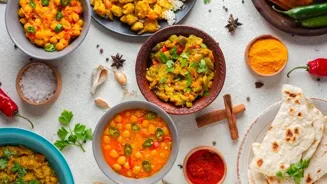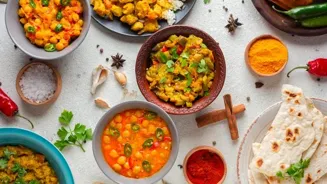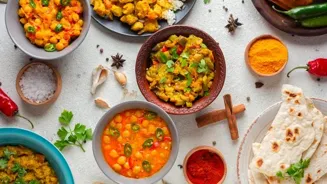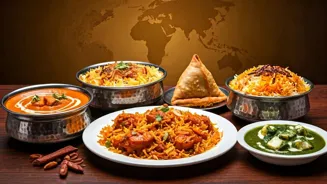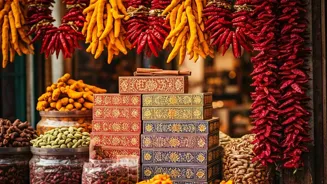Discover the surprising origins of 5 iconic Indian dishes! Uncover the global journey behind your favorite flavors
Namaste readers! We all know and love Indian food, right? The spices, the flavors, the sheer
variety – it's a culinary adventure. But did you know that some of the dishes we consider quintessentially Indian actually have roots in other parts of the world?
Prepare to have your taste buds and your mind tantalized as we uncover the surprising origins of five iconic Indian dishes. Sometimes, what we think we know is just the tip of the iceberg, or should we say, the tadka on top!
Samosa: A Delicious Treat with a Global Journey
First up, let's talk about samosas. These crispy, triangular pockets of deliciousness, stuffed with potatoes and peas, are a staple at tea time and celebrations across India. You can find them everywhere, from roadside stalls to fancy restaurants.
But here's the twist: the samosa isn't originally from India! Its journey began in the Middle East, where it was known as sambosa. It traveled to India with traders in the 13th or 14th century. The Indian cooks then adopted it.
They changed the fillings and spices to suit the local palate, creating the samosa we know and love today. So, while it may not be "born" in India, the samosa has definitely been "made" in India, with a special desi twist. This tasty treat has become so loved by the Indian public.
It is a true example of culture mixing through foods. So next time you bite into a samosa, remember its global journey!
Rajma: A comforting North Indian dish with global roots, showcasing culinary innovation
Now, let's move on to rajma. This kidney bean curry, usually served with rice, is a comfort food. It's specially popular in North India. Rajma chawal is a match made in foodie heaven! But guess what? Kidney beans themselves weren't originally grown in India. They came from Central and South America.
The Portuguese are believed to have introduced kidney beans to India. As the beans got popular here, cooks experimented with local spices and cooking techniques. This lead to the rich and flavorful dish that we now know as rajma. Thus it also shows how Indian culinary is open for innovation.
It also adapted foreign items into our own amazing delicious items. It has successfully made global food local. From different places now it becomes Indian favorite.
Soft, spongy gulab jamun: a beloved Indian dessert with Persian roots
Next on our list is gulab jamun. These soft, spongy milk balls soaked in fragrant sugar syrup are a dessert lover's dream. No Indian celebration is complete without them. You can find them served hot or cold. Gulab jamun literally translates to "rose berry." It sounds very Indian, doesn't it?
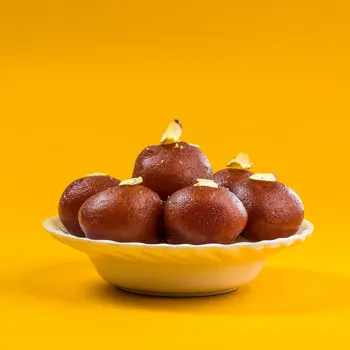
But hold on! The gulab jamun has roots in Persia, now modern-day Iran. It is believed to have originated from a dessert called luqmat al-qadi, which was a fried dough ball soaked in syrup. This dish came to India with Persian rulers.
Over time, Indian cooks adapted the recipe, using khoya (reduced milk solids) to make the dumplings softer and adding rosewater and cardamom to the syrup for a distinctly Indian flavor. The gulab jamun became a favorite dessert here. It has been loved for many generations now.
Jalebi: a sweet treat with rich history and flavors
Let’s not forget about jalebi. The crispy, coiled, and syrupy sweet is a favorite. It is especially popular during festivals and special occasions. Imagine biting into a warm jalebi! It creates a burst of sweetness. Its origins can be traced back to West Asia. It was known as zalabiya in Arabic.
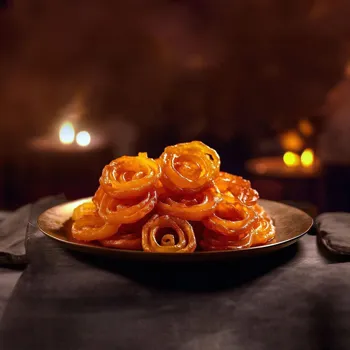
Medieval Indian texts mention a sweet called kundalika or jalavallika, which is considered to be the predecessor of the jalebi. The dish traveled to India with traders and invaders. It was then adopted and adapted by local cooks. They created the jalebi we know today.
The perfect jalebi is an art form in itself. Some even call it a "sweet pretzel." It's a delicious and intricate treat.
Naan: Versatile Indian flatbread with rich history
Finally, let's consider naan. This soft, leavened flatbread, cooked in a tandoor oven, is a staple accompaniment to many Indian dishes, especially curries. But like some of the other dishes on our list, naan has a fascinating history that extends beyond India's borders.
While flatbreads have been around for centuries, the version of naan we commonly see in Indian restaurants is believed to have originated in Persia and Central Asia. It was commonly eaten in the Mughal Era. Naan gained popularity in India during the Mughal period.
These are commonly cooked in the tandoor. Chefs started adding naan to their menu. These breads are eaten with gravies. They're often brushed with butter or ghee for extra richness and flavor. Thus, the simple naan is a delicious and versatile bread.
